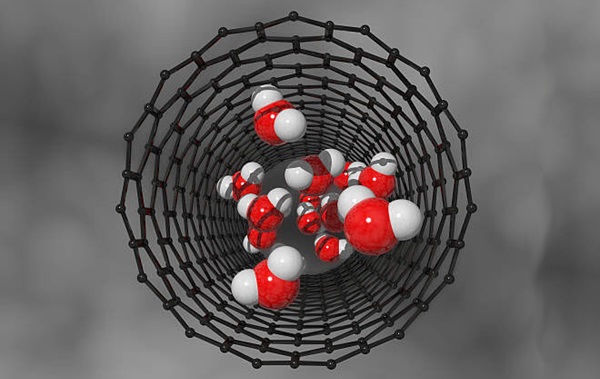Topology of Black Holes' Horizons
Downloads
Downloads
't Hooft, Gerard. "Virtual Black Holes and Space–Time Structure.” Foundations of Physics 48, no. 10 (January 30, 2018): 1134–1149. doi:10.1007/s10701-017-0133-0.
't Hooft, Gerard. "Black Hole Unitarity and Antipodal Entanglement.” Foundations of Physics 46, no. 9 (May 5, 2016): 1185–1198. doi:10.1007/s10701-016-0014-y.
Peters, James F., and Arturo Tozzi. "Quantum Entanglement on a Hypersphere.” International Journal of Theoretical Physics 55, no. 8 (April 11, 2016): 3689–3696. doi:10.1007/s10773-016-2998-7.
Zhou, Jun, Hong-yi Fan, and Jun Song. "A New Two-Mode Thermo- and Squeezing-Mixed Optical Field.” Chinese Physics B 26, no. 7 (June 2017): 070301. doi:10.1088/1674-1056/26/7/070301.
Borsuk, Karol. "Drei Sätze über die n-dimensionale euklidische Sphäre." Fundamenta Mathematicae 20, no. 1 (1933): 177-190.
Henderson, David Wilson, and Daina Taimina. Experiencing geometry: in Euclidean, spherical, and hyperbolic Spaces. Pearson College Division, 2001. ISBN-13: 978-0130309532.
Matousek, Jiri, Anders Björner, and Günter M. Ziegler. Using the Borsuk-Ulam theorem: lectures on topological methods in combinatorics and geometry. Springer Science & Business Media, 2003. ISBN: 3-540-00362-2.
Borsuk, Karol. "Errata to the paper" Fundamental retracts and extensions of fundamental sequences" Fundamenta Mathematicae 64 (1969), pp. 55-85." Fundamenta Mathematicae 3, no. 64 (1969): 375.
Borsuk, M., and Anna Gmurczyk. "On homotopy types of 2-dimensional polyhedra." Fundamenta Mathematicae 109, no. 2 (1980): 123-142.
Dodson, Christopher T., and Phillip E. Parker. A user's guide to algebraic topology. Vol. 387. Springer Science & Business Media, 1997. ISBN: 0-7923-4292-5, MR1430097.
Krantz, Steven G. "A Guide to Topology” (2009). doi:10.5948/upo9780883859179.
Manetti, Marco. "Topology.” UNITEXT (2015). doi:10.1007/978-3-319-16958-3.
Hooft, Gerard'T. "Dimensional reduction in quantum gravity." arXiv preprint gr-qc/9310026 (1993).
Susskind, Leonard. "The World as a Hologram.” Journal of Mathematical Physics 36, no. 11 (November 1995): 6377–6396. doi:10.1063/1.531249.
Ahmed, Nasr, and H. Rafat. "Topological Origin of Holographic Principle: Application to Wormholes.” International Journal of Geometric Methods in Modern Physics 15, no. 08 (August 2018): 1850131. doi:10.1142/s0219887818501311.
Hatcher, Allen. "Algebraic topology”, 2005. ISBN-13: 978-0521795401.
Husemoller, D. "Fibre bundles Third edition." Graduate Texts in Mathematics 20 (1994). ISBN: 0-387-94087-1, MR1249482.
Möbius, A.F. "The band appears in his." (1858): 519.
Starostin, E. L., and G. H. M. van der Heijden. "The Shape of a Möbius Strip.” Nature Materials 6, no. 8 (July 15, 2007): 563–567. doi:10.1038/nmat1929.
Moreva, Ekaterina, Giorgio Brida, Marco Gramegna, Vittorio Giovannetti, Lorenzo Maccone, and Marco Genovese. "Time from Quantum Entanglement: An Experimental Illustration.” Physical Review A 89, no. 5 (May 20, 2014). doi:10.1103/physreva.89.052122.
Moreva, Ekaterina, Giorgio Brida, Marco Gramegna, Vittorio Giovannetti, Lorenzo Maccone, and Marco Genovese. "Entanglement Discloses Time as an Emergent Phenomenon.” CLEO: 2014 (2014). doi:10.1364/cleo_qels.2014.fw1a.8.
Zaslavskii, O. B. "Acceleration of Particles Near the Inner Black Hole Horizon.” Physical Review D 85, no. 2 (January 18, 2012). doi:10.1103/physrevd.85.024029.
Mitra, Abhas. "Kruskal coordinates and mass of Schwarzschild black holes." arXiv preprint astro-ph/9904162 (1999).
Parzygnat, A.J. Krkuskel-Szekeres coordinates and Penrose diagrams, (2014). URL: http://www.physik.uniregensburg.de/forschung/wegscheider/gebhardt_files/skripten/Lect04KruskalCoord.pdf.
Mitra, Abhas. "The Mass of the Oppenheimer-Snyder black hole." arXiv preprint astro-ph/9904163 (1999).
Van Essen, David C. "A Population-Average, Landmark- and Surface-Based (PALS) Atlas of Human Cerebral Cortex.” NeuroImage 28, no. 3 (November 2005): 635–662. doi:10.1016/j.neuroimage.2005.06.058.
Tozzi, Arturo, James F. Peters, Andrew A. Fingelkurts, Alexander A. Fingelkurts, and Pedro C. Marijuán. "Topodynamics of Metastable Brains.” Physics of Life Reviews 21 (July 2017): 1–20. doi:10.1016/j.plrev.2017.03.001.
Moura, E., D.G. Henderson. "Experiencing geometry: on plane and sphere”. (1996) ISBN 978-0-13-373770-7.
Peters, James F., Arturo Tozzi, and Sheela Ramanna. "Brain Tissue Tessellation Shows Absence of Canonical Microcircuits.” Neuroscience Letters 626 (July 2016): 99–105. doi:10.1016/j.neulet.2016.03.052.
Tozzi, Arturo, and James F. Peters. "From Abstract Topology to Real Thermodynamic Brain Activity.” Cognitive Neurodynamics 11, no. 3 (March 14, 2017): 283–292. doi:10.1007/s11571-017-9431-7.
Sengupta, Biswa, Arturo Tozzi, Gerald K. Cooray, Pamela K. Douglas, and Karl J. Friston. "Towards a Neuronal Gauge Theory.” PLOS Biology 14, no. 3 (March 8, 2016): e1002400. doi:10.1371/journal.pbio.1002400.
Tozzi, Arturo, and James F. Peters. "A Topological Approach Unveils System Invariances and Broken Symmetries in the Brain.” Journal of Neuroscience Research 94, no. 5 (February 16, 2016): 351–365. doi:10.1002/jnr.23720.
Tozzi, Arturo. "The Multidimensional Brain.” Physics of Life Reviews (January 2019). doi:10.1016/j.plrev.2018.12.004.
- This work (including HTML and PDF Files) is licensed under a Creative Commons Attribution 4.0 International License.




















